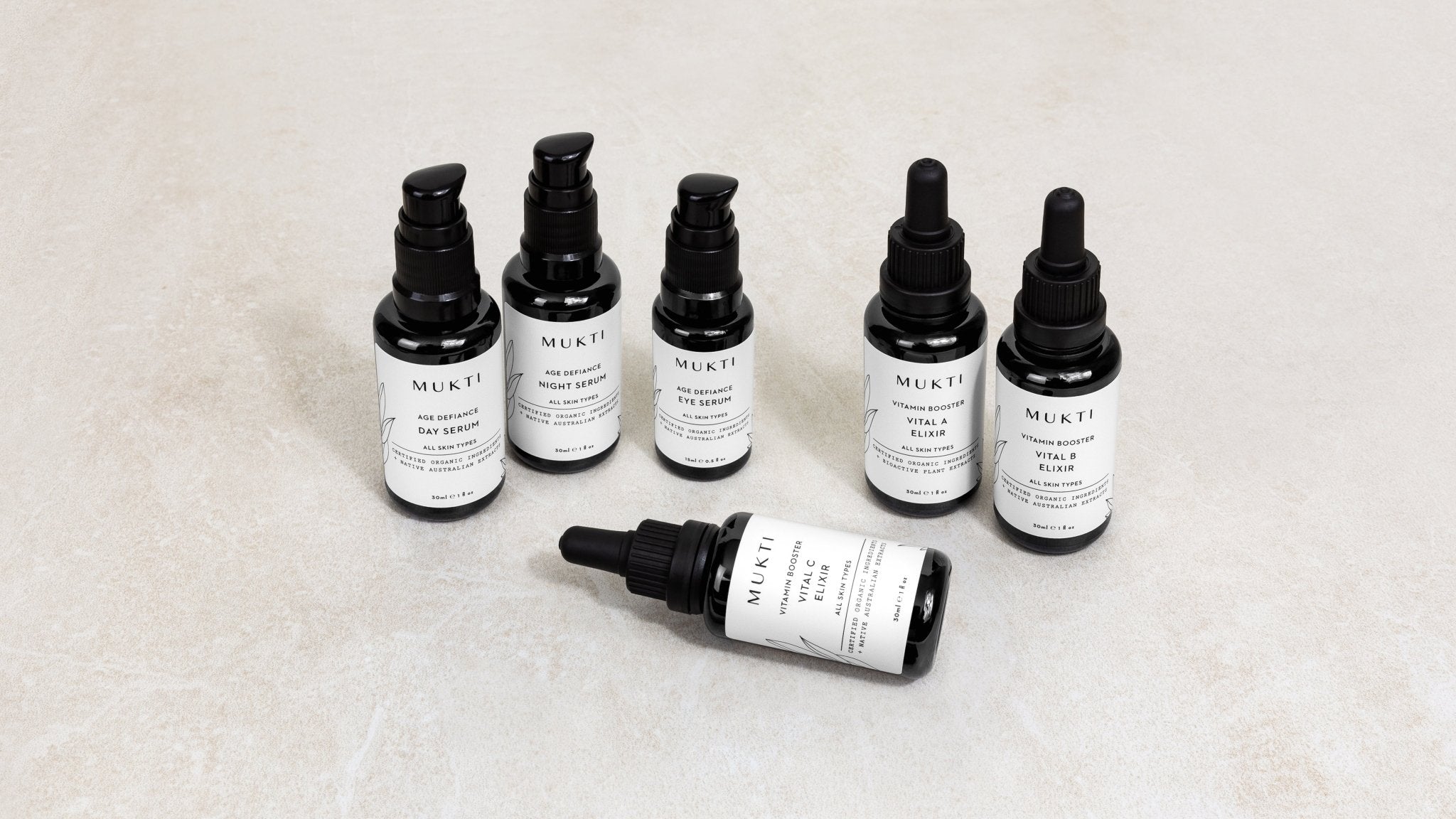
Serums: the Star Performers in Your Routine
If you prefer to keep your skincare routine as simple as possible, you may have wondered why the need for so many different products, and whether it’s really worth the bother.
In some cases, you really won’t need 100 different products in your regimen. But in terms of the different product types, such as serums, creams, oils, emulsions, mists and everything in between, there are plenty of good reasons to categorise them in this way. It’s all about the ingredients, their role, how they mix together, and how deeply they penetrate into the tissue. And when it comes to serums and elixirs, these concentrated little concoctions are considered the active ‘worker bees’ of any skincare line. Let’s break it down further.
Why do I need a serum?
Serums and elixirs are generally highly-concentrated blends of active ingredients that are designed to address a specific concern or purpose. They often penetrate quite deeply in order to carry out their mission, unless designed otherwise. They will commonly contain ingredients such as vitamins, peptides, hydrating agents like hyaluronic acid, pigment inhibiting agents like arbutin, or exfoliating agents like lactic acid. Generally, their texture is thin in order to ensure effective, fast absorption. This sets them apart from moisturisers which aim to soften the skin’s texture and/or sit on top to create a barrier on the surface, locking in moisture.
Consider your serums and elixirs like a vitamin – targeted, fast-absorbing, and working straight at the source. And just like a vitamin, serums often incorporate one or a small handful of active ingredients to address certain concerns, as it simply wouldn’t be possible to pack large doses of hundreds of vitamins into one capsule.

Which serums are best for me?
There is never a simple solution for everyone, and each product will provide different results from person to person. However, here are some basic rules when it comes to active ingredients:
Vitamin A: A powerful ingredient for addressing signs of ageing and problematic/acne/breakout-prone skin. Vitamin A serums can vary in concentration, from gentle daily application to potent twice-weekly treatments. Typically recommended at night, however our Vital A is safe for day and night use.
Vitamin B: Suitable for all skin types at any age. Vitamin Bs are healing, calming, anti-inflammatory, barrier-building, and can improve skin health in those experiencing redness or sensitisation. Use day or night.
Vitamin C: Antioxidant, anti-inflammatory, brightening, and supports cell renewal and vascular health. Vitamin C serums can include a wide variety of vitamin C derivatives, and at different concentrations, and these factors impact whether or not the product is suitable for more sensitive skins. If tolerated, vitamin C is beneficial for all and at any age. Best used in the morning to take advantage of its antioxidant, brightening, sunscreen-boosting properties.
Hyaluronic Acid: The hero of hydration! HA attracts water molecules, which can plump up the skin, improve texture, smooth out fine lines, and help to prevent dehydration throughout the day or night. Suitable for all skin types and ages.
Antioxidants: Generally suitable for all skin types, all ages, and at any time, antioxidants are a wonderful way of boosting skin health and protecting from damage-causing free radicals. We encounter a lot more free radicals during the day, both from external pollutants and from our day-to-day stresses, UV exposure, alcohol and pesticide consumption, and exercise. Therefore antioxidants are particularly useful in the daytime.

How can I layer my serums together?
There aren’t any set rules around how many serums you should or shouldn’t use, but there are several ways in which you can make the most of your routine.
Avoid over-exfoliating: Be mindful of how many exfoliating ingredients you are combining together, particularly if you use products across multiple brands. They have not been designed for use together, and it’s easy to overdo it and sensitise your skin.
Eye creams first: Start with your eye products. They are often designed to go first, and this will provide the added benefit of protecting the delicate skin from other active serums that may be too harsh for the orbital area.
Layer by texture: Go from the lightest to the heaviest texture. If you have particularly thin, watery serums or elixirs, apply these first, then your heavier/thicker ones next. Thicker emulsions or creams, moisturisers and oils generally sit on the skin’s surface and may block your serums’ active ingredients from penetrating.
Peptides first: If any of your serums contain peptides, try to apply these first so the peptides have the best chance of penetrating without interference. They may be required to reach a very specific depth in order to work at all.
Leave each layer to absorb: Leaving a few minutes in between each serum will give it the best chance of efficacy, allowing it to be absorbed before applying the next.
Sunscreen last: For morning application, apply your serums, followed by your moisturisers and/or oils, with your sunscreen going on last. Anything applied over the top will prevent UV radiation from reacting directly with the sunscreen ingredients - this is essential for it to provide you with proper protection.
While the world of serums can be overwhelming, keep in mind that they are all about addressing your individual wants and needs. If you love using an abundance of products, feel free to incorporate a selection of serums that each act on different concerns, without being too harsh on your skin. If you like to keep things simple, focus on a few key products designed to hydrate, nourish and protect, adding new additions in slowly as you feel comfortable.
And if you need some extra guidance, remember our Mukti Skin Experts are just a few clicks away for a complimentary consultation!




Leave a comment
This site is protected by hCaptcha and the hCaptcha Privacy Policy and Terms of Service apply.